My copy of Scenic Wonders of Australia was published in 1976, only three years after the opening of the Sydney Opera House – an edifice that immediately shot to the top of the list of attractions to visit, bumping the Sydney Harbour Bridge to number two.
A quick scan of the internet recently confirmed my suspicion that very little has changed in the past 40 years.
The must-sees are as they were, jiggling up and down the same top 10 list: Sydney Opera House, Sydney Harbour Bridge, Great Barrier Reef, Uluru, the Kimberley, Melbourne, Kakadu, the Great Ocean Road, Blue Mountains and Daintree.
And all these scenic wonders, bar Uluru, are virtually on the same street – our National Highway 1.
For the most part it’s a relatively safe, sealed and signposted route that runs over 15,000km circumnavigating the continent. Along the way there is a wide choice of accommodation, from five-star resorts to free overnight rest areas. Good food is generally available, and at worst you’ll be able to score a microwaved meat pie at a 24/7 servo. And, while it’s wise to refuel whenever
your tank falls below half, a fuel range of 300km will (mostly) keep you mobile.
But there are a few things you should think about before you set off…
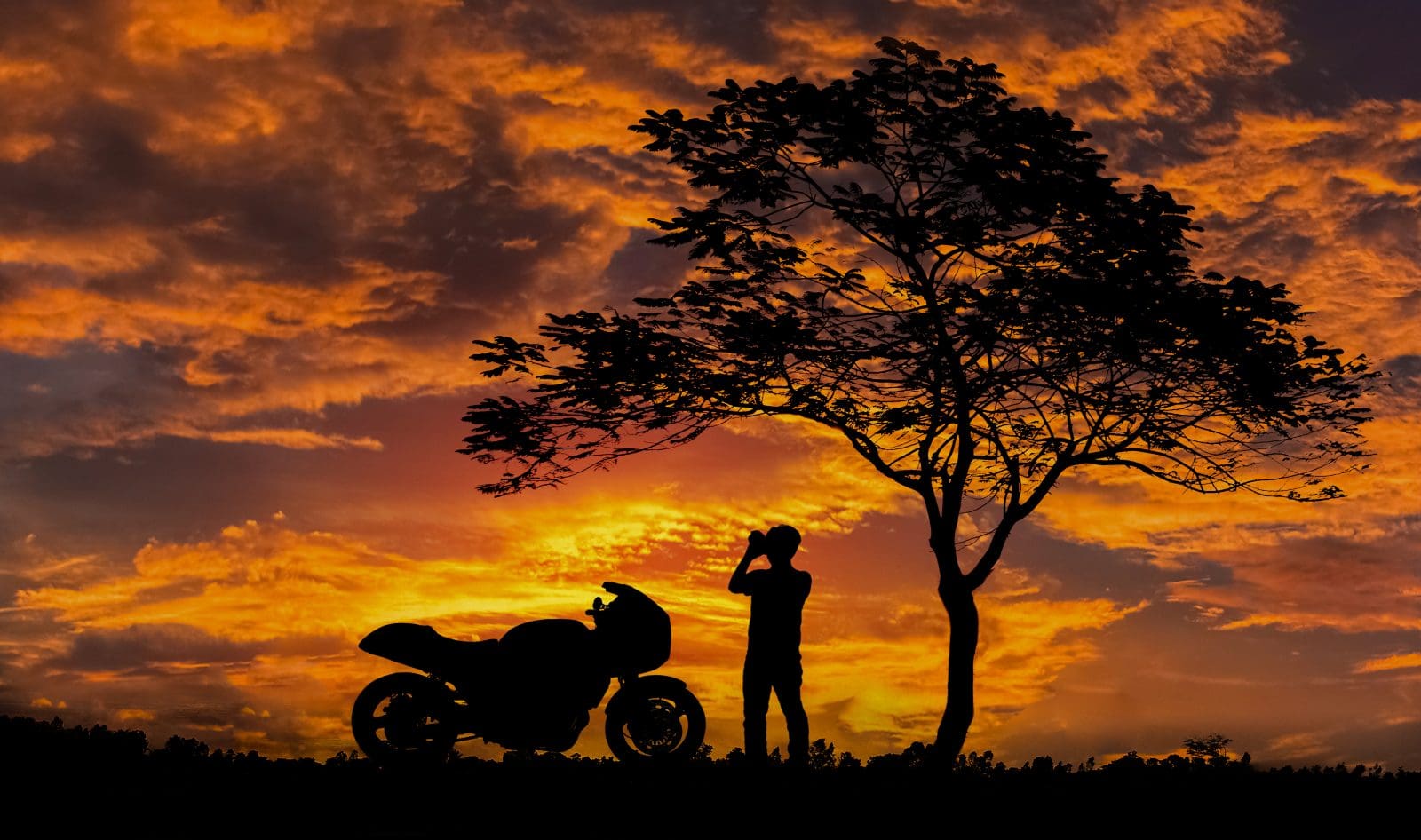
Chariot
I’ve often been asked what motorcycle would be the most suitable to lap Oz. Most adventure bikes with dual-sport tyres will be comfortable over the long stretches and tractable in the parks and forests. But around-Australia rides have been done with a Hodaka Combat Wombat, a 1972 Harley Sportster, postie bikes and Honda Goldwings, so don’t get hung up on the choice. The BMW GS range has an enviable reputation for quality and reliability, from the original R80/GS to the latest R1200GS Rallye X. Even the smaller F800GS will handle anything that our harsh land can throw at it, and the reason you see so many Kawasaki KLR650s and Suzuki DR650s in the outback is because they can be relied on to cover maximum country at minimum cost – leaving more coin for a good steak and a good bottle of red.
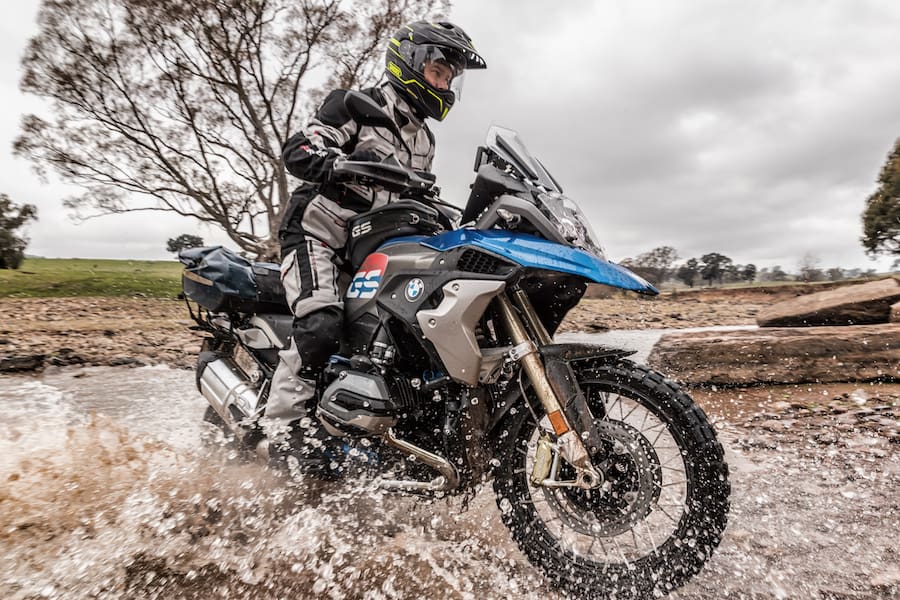
Rubber
Take advice on tyre choice for your particular model. While you’ll want something with stability in the gravel, you don’t need aggressive knobbies that will shred after two days on the blacktop. Beyond the black stump, your biggest potential problem will be a flat tyre. This can usually be prevented by fitting ultra-heavy-duty tubes before departure. Take a spare set with you, and don’t forget tyre levers and a hand pump. For tubeless tyres, take a repair kit and know how to use it.
Test it
It’s essential to test your set-up before you head off. You shouldn’t be carrying so much additional weight as to need major suspension adjustment, but monitor tyre pressures and static sag. Then spend two full days on your bike riding at least 500km. If your arse aches you need a more comfortable seat, and if you’re a touch sore across the shoulders consider fitting handlebar risers. If you’re not fighting fit after a two-day ride, you’ll be a wreck after a week in the saddle. An upright riding position is the key to comfort over long distances.
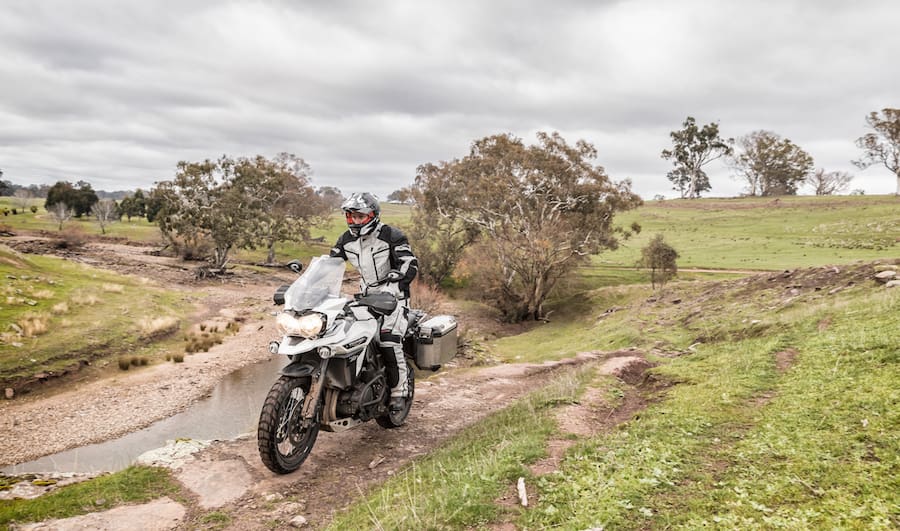
Luggage
I keep seeing images of large adventure bikes toting aluminium panniers and topboxes; and advertisements boasting more than 100 litres of luggage capacity. Disregarding the potential weight penalty, all I can remember about riding such beasts is the wind resistance and buffeting in high wind areas; and the sphincter tightening when facing down a road train on a narrow beef development road. My reckoning is that if you can’t fit all your kit into a pair of soft panniers that rise no higher than your seat – leaving room on the rack for a fuel bladder when necessary – then you’re on the wrong form of transport. And while I realise that riders in advertisements never drop their bikes, I find it hard to believe they never dent or scratch the panniers.
Gear
These days there’s a great range of do-it-all gear. There are three-in-one jackets incorporating a lightweight waterproof outer and a warm removable fabric inner that combined to give you one warm, waterproof jacket. Helmets can adjust to various conditions, just make sure your lid is perfectly comfortable. And make sure your boots are waterproof, cos a few days of wet feet sucks – and hurts! Clothes-wise, all you really need is a pair of lightweight quick-dry shorts, the same in longs, a polo, a jumper and a pair of runners. Anything else is superfluous, though you should note that runners are not considered suitable footwear in the discoteque at Fitzroy Crossing.
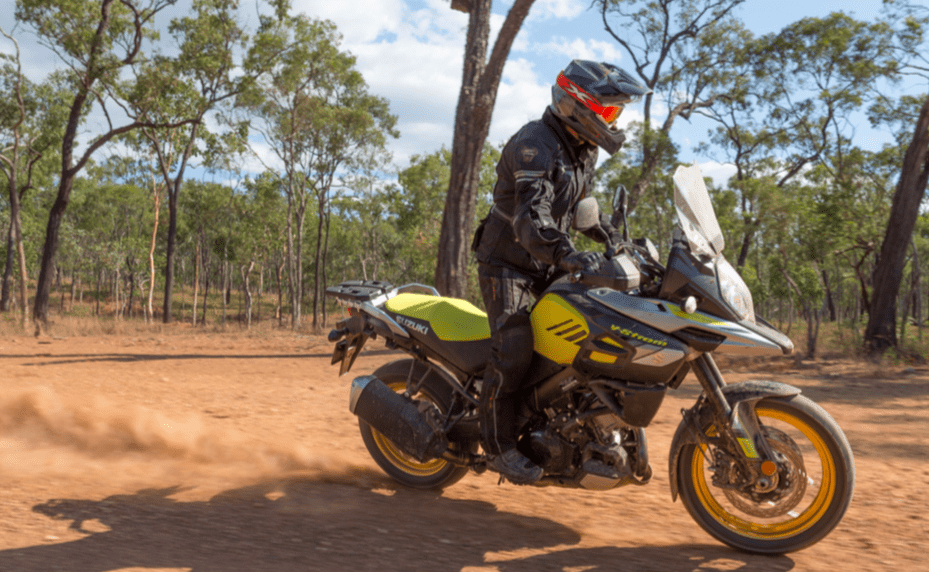
Help
Accidents happen, so it’s in your best interests to carry a personal first-aid kit, even if you’re travelling alone – which, incidentally, is not such a good idea. Even when you’re staying on the bitumen there are some long and lonely stretches of highway, and should you come to grief you would much rather have a compos mentis mate seeking assistance on the phone than being forced to wait for assistance. If you do insist on going on your Pat Malone, emergency beacons are very affordable these days, but do your research to make sure its frequency will work where you’re going.
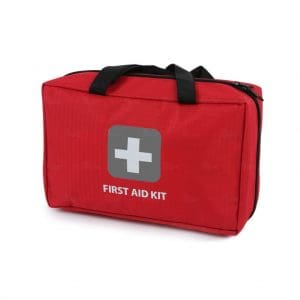
Annual Leave
With a few shortcuts, it’s possible to ride the full length of Highway 1 at legal speeds in a fortnight. However, to really appreciate the experience takes at least six weeks. And you still won’t have passed within 1000km of its spiritual centre – Uluru. Nor ridden the fabulous mountain passes of our country’s extremities in Tasmania. And you also wanted to take a quick look at Kangaroo Island, and that Auto Museum at Birdwood, and the
Super Pit at Kalgoorlie…
Don’t leave it until you’re actually rolling to discover you’ve run out of time. Although a GPS and a SpotTracker are life-savers once you’re out there, no electronic device will match an outline plan with the aid of a good map. HEMA maps are excellent, and Aussie company Westprint has good detail maps of legendary outback tracks
such as the Birdsville and Strzelecki.

Fly out, fly in
These days there are many transport companies that will move your bike around the country reliably and economically between major centres – especially if there’s a group of you needing transport – and you get to fly, avoiding the unnecessary boring sections. Of course there are those riders who will claim there are no boring bits on a bike, but my guess is that not many of them have spent more than 20 consecutive eight-hour days in the saddle. No matter how scenic the ride, it can become ‘same old same old’.

Lap sectors
I have friends who are currently on their third year of a ’round the world ride. Twice now, when winter has effectively closed the northern hemisphere, they’ve stowed their bike for a few months and flown home to Australia. With relatively inexpensive airfares connecting most population centres, a lap of Oz could take the same form. And make the most of the weather, particularly when we live on a continent where riding above the Tropic of Capricorn between November and March is unbearable and often impossible, and riding across the Great Australian Bight in mid-winter is insufferable. Breaking your lap of Oz into several three-week, 3000km slices makes it easier to digest. For those of you living on the east coast, a sojourn in the Apple Isle in November or March would be an ideal rehearsal. And for a finale there’s always The Red Centre.
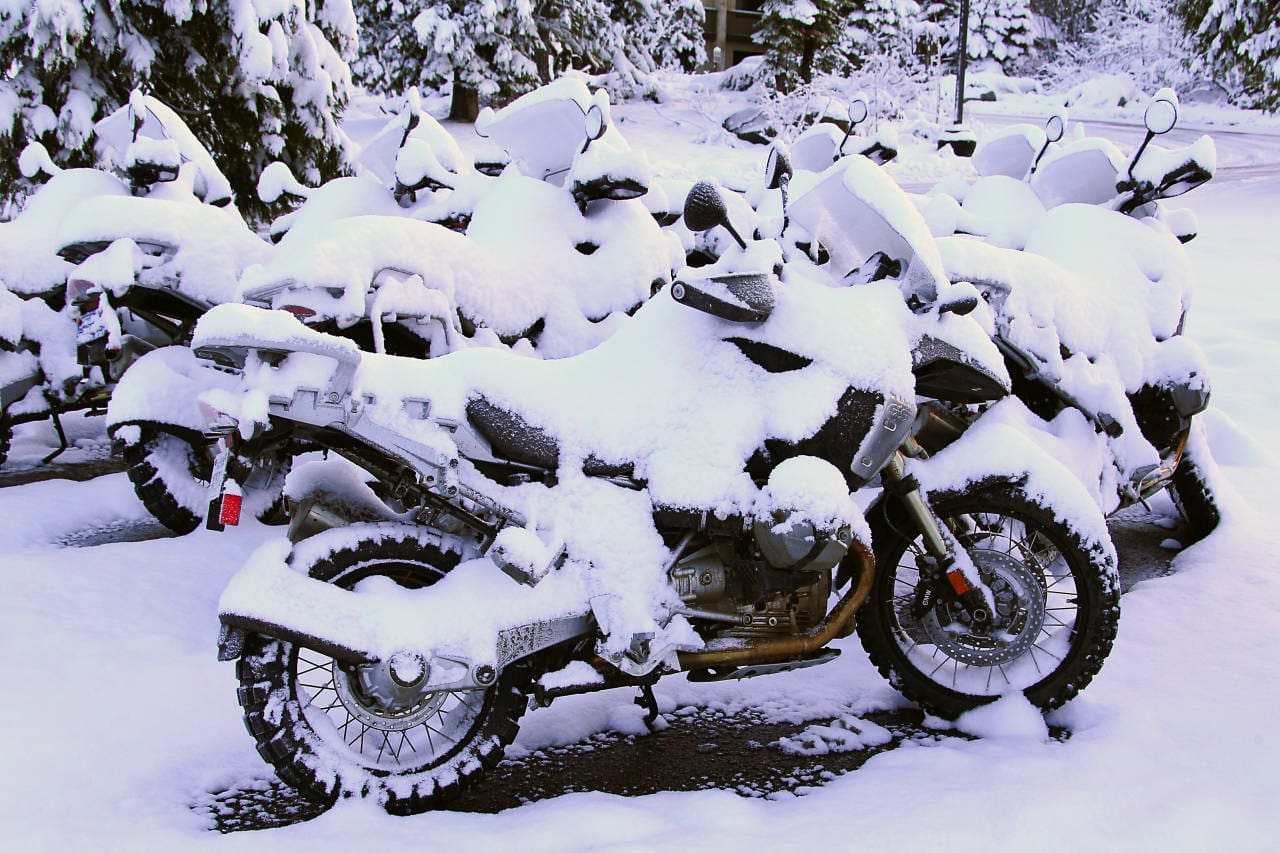
Sleeping arrangements
Accommodation
While camping retains an aura of rugged romance, there’s actually very little to be said for it, particularly if you have to do it yourself.
In the ‘olden days’ some country accommodation wasn’t much better than camping, and was difficult to book ahead with any reliability. Now booking pub accommodation is really easy; negotiating rates, checking photos of the pub, confirmation and payment can all be done online.
In my opinion, camping really is just nature’s way of promoting pubs.
Caravan parks
One thing the grey nomads have done for us all is improve the quality and services offered by camp grounds and caravan parks – quality that once varied considerably.
Now most caravan parks are oases in the wilderness, with clean facilities, mini-supermarkets and many with dining facilities, bars and swimming pools. What more could a camper ask for? Well, you could ask for a cabin – to sleep two, four, six or eight – and probably get one judging by most of the establishments I’ve visited. All with your own refrigerator.
It just demonstrates that even camping ground proprietors realise that camping is for the birds.

Back-up
Of course it’s possible to lighten the load and take a back-up vehicle for support. Somewhere to stow all the swags, a huge tent, camp chairs and a table, eating utensils, an entrenching tool, lots of food, a huge water tank, and a brace of 12V batteries to keep the piss cold for days on end. You can set up camp anywhere with almost all the facilities available at the average country pub. But when there’s a pub already there, why bother? Particularly when you don’t have to pack
it all up and take it with you the next day.
Home stays
Over the past decade, more and more property owners have been offering accommodation to those who venture off the beaten track. Usually these facilities are self-contained cabins set up for families who take their own food and bedding. That is, there’s generally no catering – and certainly no bar. However, if you’re seeking a different experience, many of these station stays will provide dinner and breakfast by prior arrangement. Pre-pay and your hosts might lay on a supply of icy cold beers and have a campfire waiting for the flick of your match.
Should a station stay not be advertised, it’s worth asking if the homestead can lay on a barbie, a few beers, some sort of bed for the night and top up your tanks the next morning. Just don’t expect them to accept cards.

But wait there is more
Not only are nine of Australia’s 10 ‘must sees’ within cooee of Highway 1, so is my own short-list. Heading clockwise from Gassit HQ in Melbourne, there’s the Head of Bight (near Nullarbor), closely followed by what’s left of Eucla. Then it’s around to The Pinnacles on the western seaboard, and inland to Karijini National Park. In the north-west, Cape Leveque has more going for it than any other remote seascape, then there’s Purnululu (the Bungle Bungles) and Australia’s inland sea, Lake Argyle. On the Gulf, the lost city near Lorella Springs is no longer lost (and there’s a similar rock formation near Cape Crawford on Highway 1). Over on the Pacific coast, Karumba is the only place to fully enjoy a plate of gulf prawns and a schooner of NQ Lager; Cairns is the hub for the ride up to Karumba, the Captain Cook Highway between Cairns and Port Douglas, and the Gillies Range Road to Atherton. The Pacific Highway between Brisbane and Sydney has been largely supplanted by expressway, but the ‘old road’ is a rider’s delight. And, while neither are near Highway 1, you’ve not done Australia until you’ve ridden around Mount Panorama and done the same at Phillip Island.
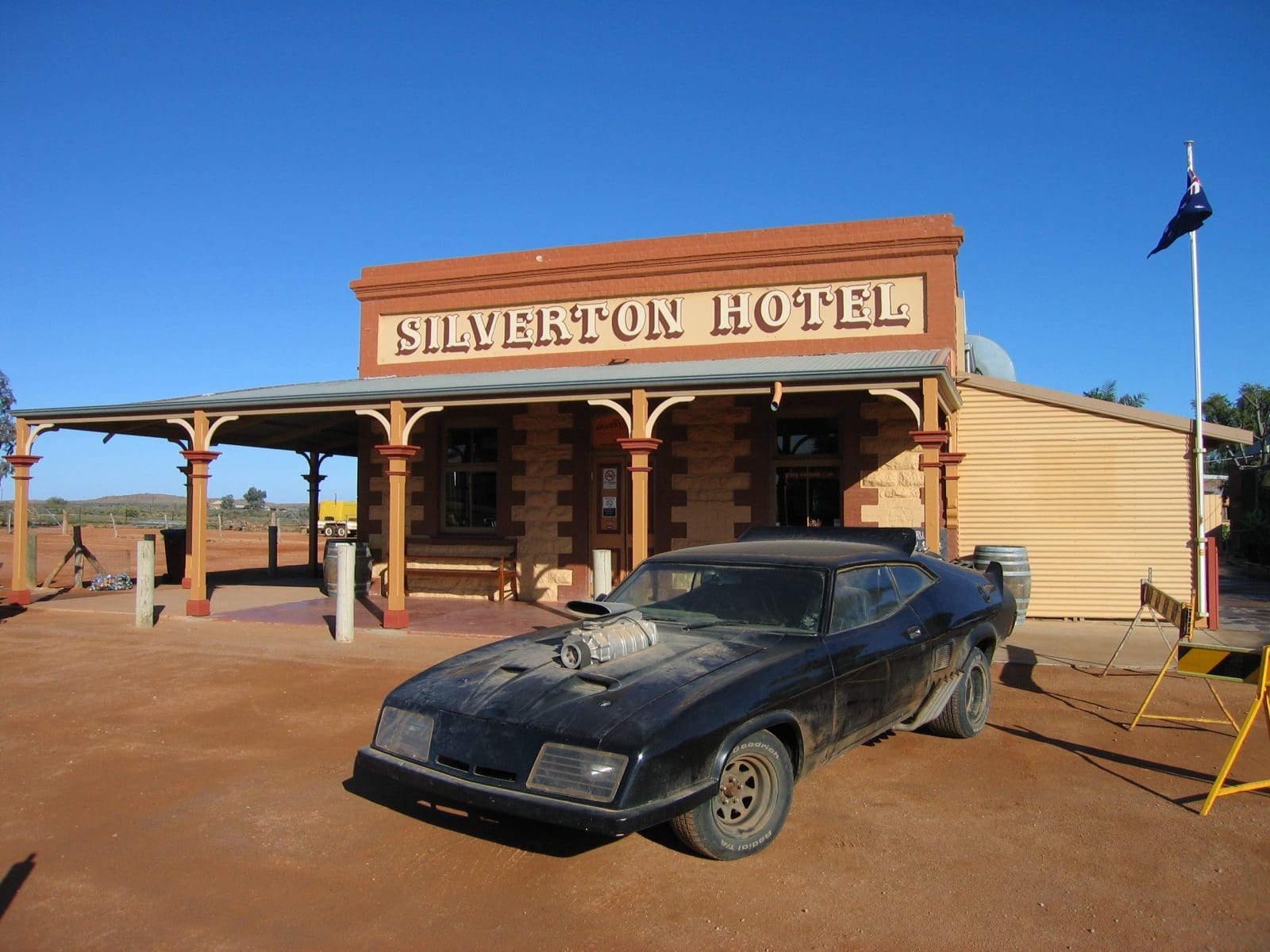
WORDS PETER WHITAKER PHOTOGRAPHY AMCN ARCHIVES